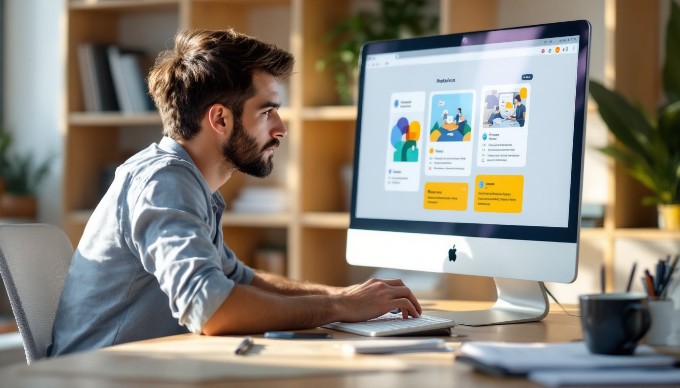Why use Material Design for modern web and mobile applications
Introduction to material design
Navigating the dynamic world of digital design can be challenging, especially when it comes to choosing a design language that enhances user experience. Enter Material Design, Google’s brainchild from 2014, which has redefined how we approach user interfaces. This design language embraces a clean, responsive, and consistent aesthetic that works seamlessly across devices. Moving away from the skeuomorphic designs of the past, Material Design draws on the tactile qualities of the physical world, offering a minimalist yet functional approach. Over time, it has adapted to new technologies and user expectations, making it a staple in modern UI/UX design. Its significance lies in simplifying the design process while boosting user experience with a cohesive, adaptable framework. As the demand for seamless digital experiences grows, understanding why to use Material Design is essential for anyone in the field.

Key benefits of using material design
Material Design provides numerous advantages for developers and designers aiming to create modern and user-friendly applications. Recognizing why to use Material Design involves appreciating its core benefits, which enhance user satisfaction through a consistent experience across platforms.
Consistent user experience across platforms
Material Design ensures a seamless experience for users on mobile devices, tablets, or desktops by maintaining:
- Cross-device compatibility that keeps applications looking and feeling consistent
- Shadows and layers that create depth and visual hierarchy for clarity
- Animation and motion design that guide interactions and boost engagement
Rich visual and interactive elements
Material Design isn’t just about looking good—it’s about functionality too. It captivates users with:
- Shadows and layers that add depth to interfaces
- Animation and motion that enliven interactions and make them intuitive
- Dynamic elements that enhance user engagement
Responsive design for all screens
Material Design adapts to various screen sizes to ensure accessibility and visual appeal:
- Fluid layouts and grids that adjust to different dimensions
- Accessibility features for all users, including those with disabilities
- Consistent functionality and visual appeal across all screens
Strong community and resources
Material Design thrives on robust community support and extensive resources:
- Comprehensive documentation and guidelines for easy implementation
- An active community for sharing insights and troubleshooting
- Design tools and libraries that streamline the design process
Future-proofing your designs
Material Design isn’t just about the now—it’s about the future too. It ensures your applications stay relevant by:
- Aligning with current design trends for a modern look
- Offering scalability for future updates and new features
- Integrating with various platforms for flexibility and adaptability
By leveraging these benefits, Material Design helps developers create applications that are visually stunning and functionally superior, ensuring high user satisfaction and engagement.

Expert graphic design services to elevate your brand. Book a call
Conclusion on the importance of material design
In conclusion, embracing Material Design offers numerous benefits that significantly enhance the functionality and aesthetics of digital products. By prioritizing user experience through intuitive interfaces, responsive animations, and a cohesive visual language, Material Design not only streamlines development but also ensures consistency across platforms. This approach fosters seamless interactions that resonate with users, driving engagement and satisfaction. As the digital landscape evolves, adopting Material Design principles positions your projects at the forefront of innovation, aligning them with modern design standards and user expectations.
Considering these advantages, it’s evident that implementing Material Design is a forward-thinking choice that can elevate your digital presence. Whether you’re a developer, designer, or business owner, exploring the nuances of Material Design offers valuable insights into creating more effective and appealing digital experiences. We encourage you to dive deeper into this design philosophy and integrate its principles into your projects to stay ahead in the ever-evolving world of digital design.
Boost Engagement with Conversion-Driven Design
Enhance usability with optimized designs that convert users into customers.
Learn More